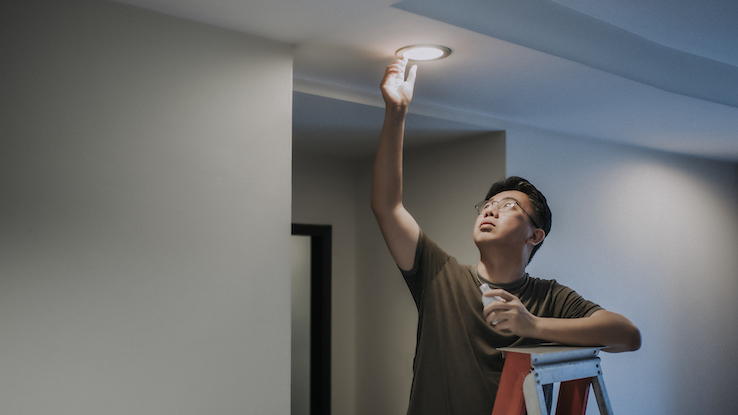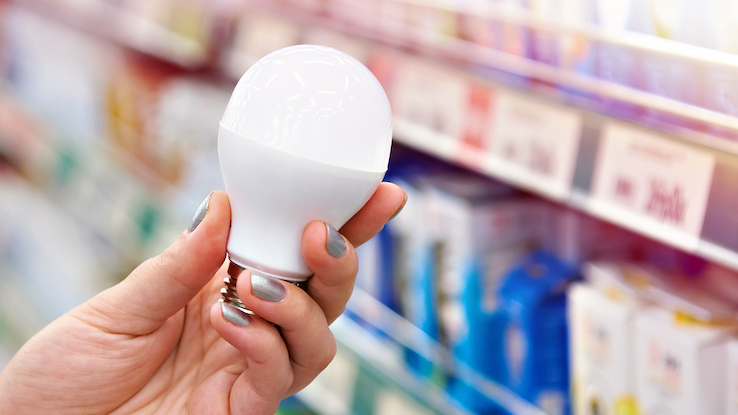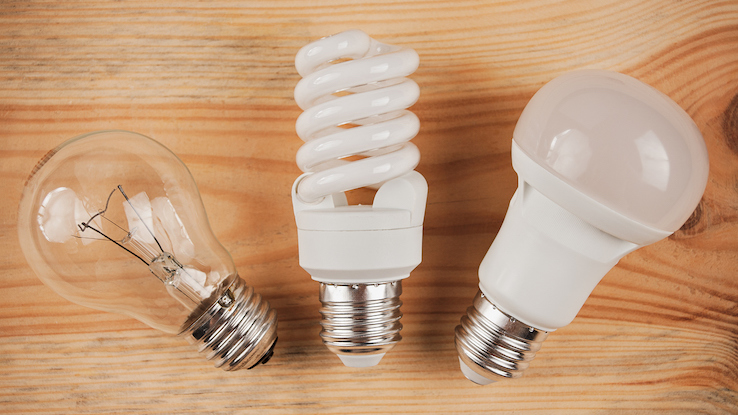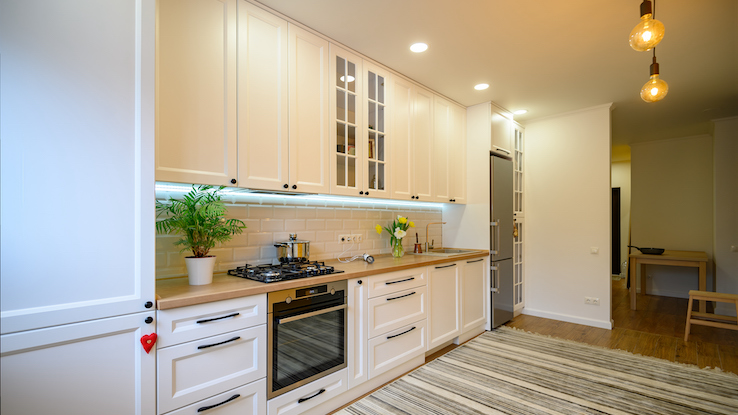How Do LED Lights for the Home Help the Environment?

LED (light-emitting diode) bulbs have officially been around since the 1960s, but they’ve gained popularity in recent years for a number of reasons. One of the biggest is that these lights are more energy-efficient than older-style incandescent bulbs. In addition, they last longer than standard lights. Many people have transitioned over to using LED lights in their homes, cars and offices, which is helping them save money on energy bills in the long run — and helping the environment in the process.
If you’re thinking about making the switch to LED, join us for a look at the science that makes these lights more energy efficient. You’ll also learn about the different types of LED bulbs available to buy and the places where you can find the best lights online and in stores.
How Do LED Lights Work, and Why Do They Save Energy?

First, let’s delve into how LED lights work and how much energy they save. Some LED lights may look like regular light bulbs, but their design has some key differences. These lights work via an electrical current that passes through diodes to cast light. In contrast, standard incandescent lights use heat to produce light. An incandescent lightbulb may use 60 watts of energy to light up a room. Meanwhile, an LED light can do the same, but by using only 10 watts.
Some light fixtures now come with LED lights already built in; these are sometimes called integrated LEDs. They can last up to 50,000 hours (yes, you read that right!) and will illuminate any room they’re placed in with the touch of a switch or button. They also contain no toxic elements, like mercury, which is present in most fluorescent lighting used in offices and commercial spaces. This helps to protect the environment from additional toxic waste upon disposal of the bulbs.
When LED lights first hit the market in the 1960s, they were a whopping $200 per bulb. These days, however, you can find a pack of LED bulbs for less than $20, depending on the number of lights and the wattage you need. Even though incandescent lights often cost even less, they don’t last as long. You’ll likely need to replace them more often than LED lights, which can end up costing more in the long run. According to the Consumer Federation of America, switching to LED bulbs can save you around $1,000 over a 10-year period.
Understanding Different Bulb Types and Their Energy Usage

As you make your decision on new lighting, it can help to explore the other types available. Before LED lighting became popular, incandescent bulbs were (and still generally are) the most common light bulbs used in homes. They’re also the least expensive to purchase. Incandescent technology creates light by heating a metal filament housed within the lamp’s glass. While they’re less costly to buy, they use a lot of energy and typically only work for 700 to 1,000 hours. Over 90% of the energy an incandescent light bulb uses ends up escaping as heat, with less than 10% of it producing light — meaning they’re not very energy efficient.
Compact fluorescent lights (CFL) are also common for residential use, particularly in large spaces like basements and kitchens. Using gasses and phosphor inside a lamp to create light, they can take some time to warm up and eventually brighten a room. Most CFLs aren’t ideal for remote operation or dimmer switches that people often use in their homes. These bulbs do last longer than incandescent lights, but they also contain mercury, so it’s vital to handle them with care.
Outside of LED lights, CFLs and incandescent bulbs, fluorescent lamps and halogen lamps are also common choices. However, both are more complex in terms of how they work, where people use them and what temperatures they can operate at. Fluorescent lamps work when electric currents pass through cathodes, which energize mercury and gasses inside to produce light. These are typically used in residential garages and basements. They’re also energy efficient, long-lasting and low in temperature. However, the chemicals in these bulbs can be toxic to the environment.
Halogen light bulbs use a small amount of inert gas and a heated filament to produce light. These lights are energy efficient and dimmable. However, their lifespan isn’t as long as fluorescent lamps or LEDs. They can also warm to higher temperatures very quickly. These high temperatures can be a safety concern when changing the bulbs out.
What to Look For When Shopping for LED Lights

If you decide to switch to LED lights, a few tips can help you find the right design for your needs. The color temperature of lights is one of the top things to consider. Warmer lights provide softer, more comfortable illumination, while cooler temperatures are brighter. The two most popular colors for LEDs are soft white (also called warm white) and bright white (also called daylight). You may prefer soft white LED bulbs for bedrooms and living rooms. Bright white LED bulbs work well in kitchens and bathrooms, where they can provide beneficial task lighting.
Of course, your budget is an important factor to consider. Although they’ve gotten more affordable over time, LED bulbs can still be pricier than incandescent light bulbs. However, they’re more cost effective in the long run due to the resulting savings on your utility bills.
It’s also important to consider the quality of the LED light and the shape of the bulb. LED bulbs come in different shapes and sizes that need to properly match the light fixtures you have. Also, keep in mind that not all LED lights are dimmable. Unless you’ve recently upgraded, most of the existing dimmers in homes today were designed to work with incandescent bulbs. You may have to pay more for an LED bulb that can operate with a dimmer. Once you’ve settled on these decisions, it’s time to start shopping — and saving energy!





